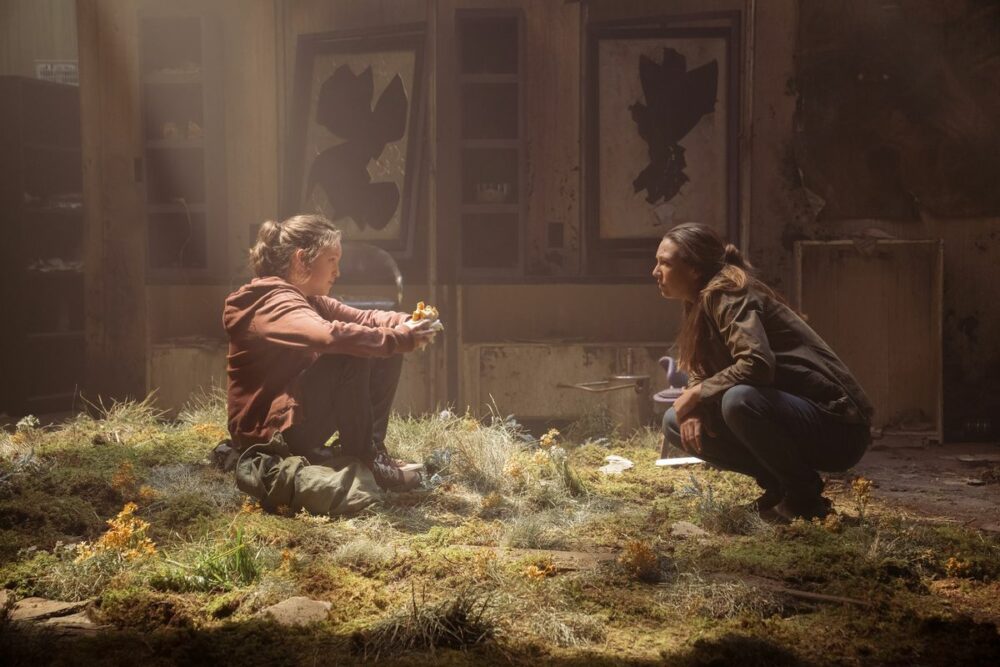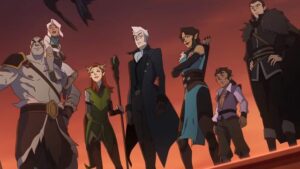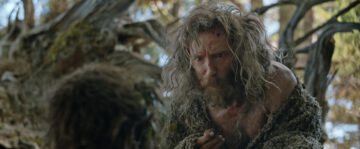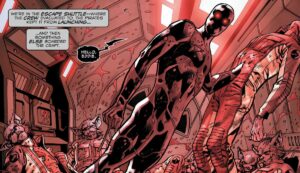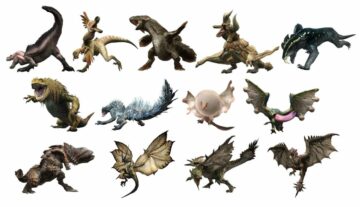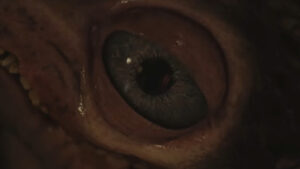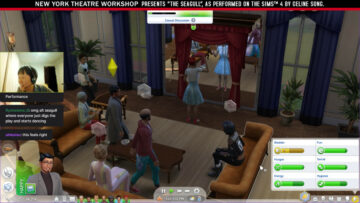If we accept as fact that The Last of Us, the 2013 PlayStation 3 video game from a studio called Naughty Dog, is a remarkable achievement in digital storytelling — and why not? there are all kinds of achievements — then its HBO adaptation is a long-awaited form of vindication. Here, on the network that defines “prestige TV” in the minds of many viewers, is a live-action version of what might be the most lauded story in video games, Cormac McCarthy with a joystick. Time folds in on itself: In 2013, the game is compared to an HBO series in good-natured jest; in 2023, the tongue-in-cheek refrain is now real, and animated performers give way to flesh-and-blood ones reenacting their programmed movements with dizzying verisimilitude. The content singularity is upon us, and it’s actually pretty entertaining.
The Last of Us follows Joel (Pedro Pascal), a smuggler living in a time after the world has succumbed to a mutated version of the Cordyceps fungus that turns people into violent zombielike creatures. It’s a genuinely unsettling twist on the traditional zombie, taking a real group of parasitic fungi that infect insects and imagining what would happen if it made the leap to humans. However, much like the most successful zombie apocalypse story in recent memory, The Walking Dead, The Last of Us is less concerned with its signature monsters and more with what happens to humanity after society’s collapse.
The Last of Us’ survey of post-apocalyptic America kicks off when Joel gets a job he doesn’t want and didn’t ask for: smuggling Ellie (Bella Ramsey), a profane teenager, across the country to a hideout run by the Fireflies, a vigilante militia opposed to what remains of the federal government. For reasons no one knows or understands, Ellie is immune to Cordyceps infection, and the Fireflies, led by the pragmatic Marlene (Merle Dandridge, one of the only actors reprising their role from the video game), hope that Ellie is the key to curing the world.
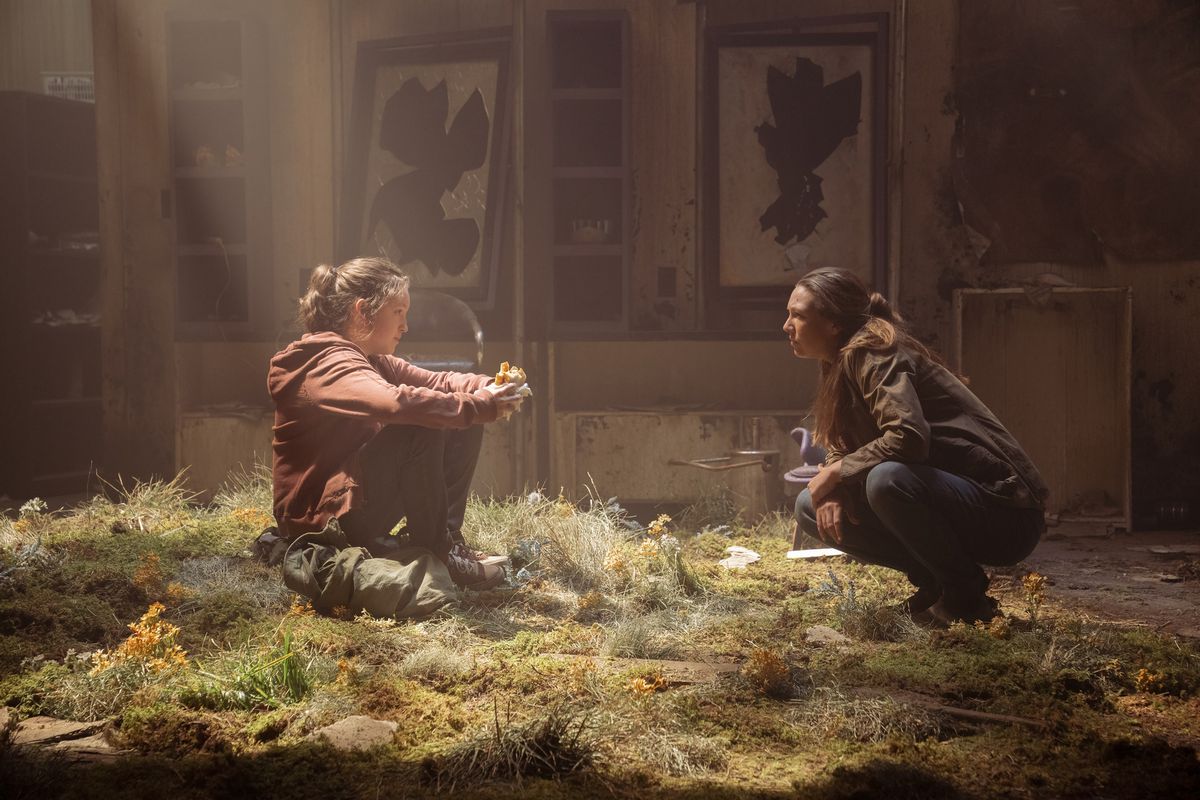
This familiar dynamic forms the spine of The Last of Us, in which a grumpy older man must protect a plucky young girl, and their relationship over time turns from resentful to appreciative. As shopworn as this sort of pairing is (doubly so for fans of the game), Pascal and Ramsey are tremendously good on screen together. Pascal’s Joel is more haunted than gruff, and Ramsey brings a meaner edge to Ellie that does a lot to transcend what began in the video game as a conduit for paternal feelings.
And yes, The Last of Us is a video game adaptation, perhaps the most faithful one committed to the screen thus far. In its first season — which runs for nine episodes, all of which I’ve seen — the series closely follows the blueprint laid out by the PlayStation 3 (and 4, and 5) game, with entire scenes and lines of dialogue lifted verbatim from it, digital acting made flesh again. What the series adds to the original narrative is a little more perspective: Where the video game is limited to Ellie’s and Joel’s subjective experiences, the series occasionally takes the time to step away from them and show the viewer what life is like for others when Joel and Ellie aren’t passing through.
These moments are easily the best The Last of Us has to offer, as fleeting as they are. (The show’s best episode is an hour almost wholly dedicated to an off-screen relationship that’s barely hinted at in the video game.) It’s in expounding on the people who fill this faithfully recreated world that The Last of Us is able to settle down and be an excellent TV show. But in their hurry to get moving and get to the next adapted set-piece, showrunners Craig Mazin and Neil Druckmann (himself co-director of the original game) continually breeze past characters that yearn to fill the space afforded by the story’s new medium.
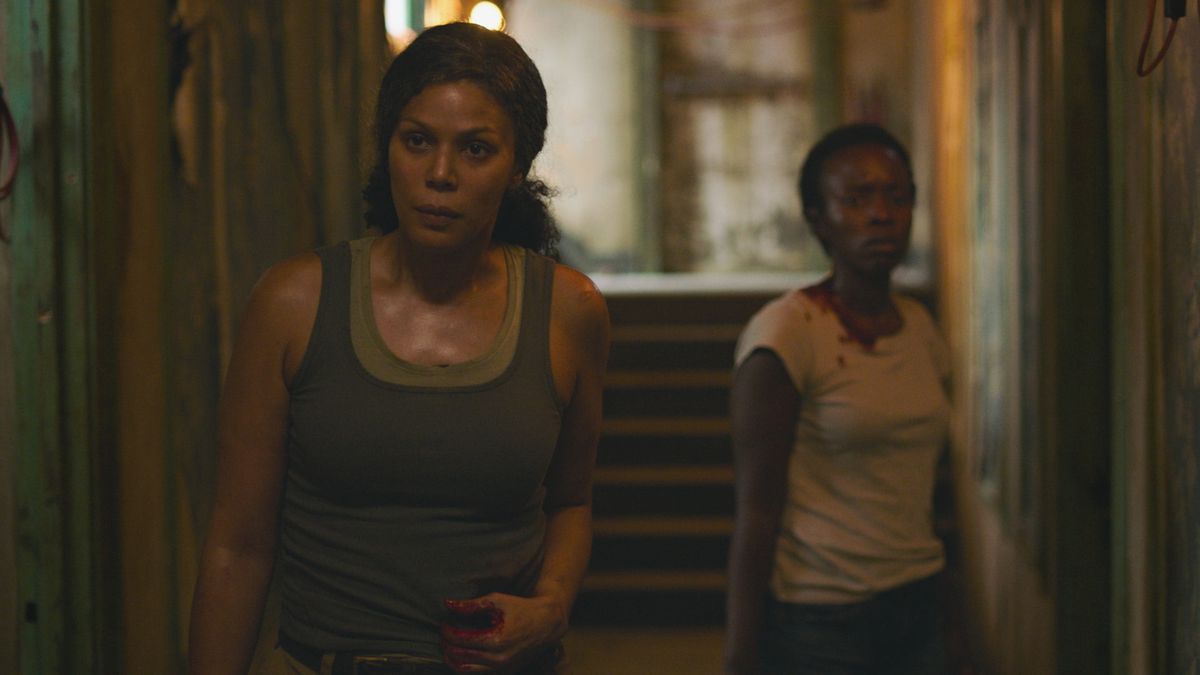
What’s frustrating about this is that the HBO series’ additions to the story are what make The Last of Us still feel worthwhile in 2023, a full decade after the video game made waves for its aesthetic embrace of prestige TV. The main plot of The Last of Us, as reproduced in the series, is about as bleak as you’d expect — a string of encounters where Joel and Ellie meet someone else, they’re revealed to have a heartbreaking story or a terrible secret, and then they meet a horrific end before our heroes must be on their way.
Yet in taking time to consider the inhabitants of the world Joel and Ellie are journeying through, The Last of Us makes a case for itself in contrast to the other big cultural touchstone it will likely be compared to. Unlike The Walking Dead, it seriously considers the idea of community in the post-apocalypse. In fact, community is the ultimate goal of survival in The Last of Us, as Joel and Ellie continually see how other people live — under the strict regime of FEDRA, the closest thing to a federal government there is; alone with their loved ones; in a socialist encampment slowly inching toward normalcy; in a religious cult that offers solace from fear.
The Last of Us isn’t rigorous in its exploration of these ideas — the show, like its source material, has a pretty clear view on what is the “right” way to live in a community — but it’s just enough to make the series feel more hopeful than most of its peers in post-apocalyptic fiction. How much of that hope is felt will depend on the lens the viewer brings to the show, as it (in a blunder bafflingly similar to its source material) regularly has its queer/BIPOC characters violently killed. As a result, it’s hard to make a case for The Last of Us beyond its novelty as a video game adaptation. On its own, it’s one of dozens of zombie-filled wastelands that viewers can stream, from the U.S. and beyond. When you can choose your own apocalypse, it’s hard to say why anyone would pick this one.
The secret to The Last of Us’ success as a video game wasn’t necessarily in originality. Zombies were already old hat in 2013, as The Walking Dead was at the peak of its popularity with the nongaming crowd, and game publishers were happy to flood the market with violent titles that entailed surviving hordes of zombies or zombielike creatures. The Last of Us’ trick, then, was bringing some humanity back to a medium that was frequently eager to back-burner it, rooting its players in the characters they played as and making them feel guilt over the violence they perpetrated toward those they did not. In context, it transcended its rote story and became a milestone for an entire industry. Its television adaptation arrives in a medium with no such baggage. Here, the story of The Last of Us lives or dies the way most art does: in the ways it is human, and the ways it fails to be.
The Last of Us premieres on HBO and HBO Max on Sunday, Jan. 15.
- SEO Powered Content & PR Distribution. Get Amplified Today.
- Platoblockchain. Web3 Metaverse Intelligence. Knowledge Amplified. Access Here.
- Source: https://www.polygon.com/reviews/23547254/last-us-review-hbo-tv
- 2023
- About
- across
- additions
- adds
- aesthetic
- All
- alone
- america
- animated
- Another
- Art
- as
- before
- BEST
- beyond
- BIG
- bringing
- brings
- Building
- case
- characters
- closely
- collapse
- committed
- community
- Consider
- considers
- content
- continually
- country
- Craig
- crowd
- curing
- decade
- dedicated
- DID
- digital
- dog
- down
- dozens
- eager
- easily
- Edge
- embrace
- entertaining
- expect
- Experiences
- exploration
- facing
- familiar
- fans
- Fear
- Federal
- Federal government
- Fiction
- finds
- First
- flood
- follows
- form
- frustrating
- full
- fungi
- game
- Games
- Gaming
- goal
- good
- Government
- Group
- happy
- Hard
- hat
- HBO
- HBO Max
- here
- heroes
- How
- HTTPS
- human
- Humanity
- Humans
- idea
- industry
- infection
- IT
- Job
- Key
- last
- Last of Us
- Led
- Lens
- light
- Limited
- Little
- Live
- lives
- living
- make
- MAKES
- Making
- man
- Market
- medium
- might
- milestone
- minds
- monsters
- more
- movements
- moving
- narrative
- Naughty Dog
- Neil Druckmann
- network
- New
- Nine
- offer
- Offers
- Old
- One
- original
- originality
- Other
- Others
- own
- pairing
- passing
- Past
- People
- performers
- perspective
- pick
- plato
- plato data intelligence
- platodata
- platogaming
- players
- playstation
- PlayStation 3
- Polygon
- popularity
- pretty
- protect
- publishers
- Real
- reasons
- regime
- relationship
- remains
- remarkable
- result
- Revealed
- role
- Run
- s
- Screen
- season
- Secret
- Series
- similar
- singularity
- So
- Space
- spine
- step
- still
- Story
- storytelling
- stream
- strict
- studio
- success
- successful
- such
- Survey
- Survival
- taking
- teenager
- television
- The
- The Game
- The Last of Us
- the world
- thing
- Through
- time
- titles
- together
- traditional
- tremendously
- tv
- twist
- u.s.
- ultimate
- under
- us
- version
- Video
- video games
- View
- viewers
- walking
- waves
- What
- What is
- WHO
- wholly
- world
- young
- youtube
- zephyrnet
- Zombies
